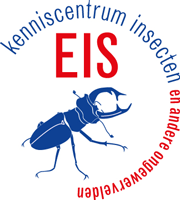Anbutsu, H. & K. Togashi 2000. Deterred oviposition response of Monochamus alternatus (Coleoptera: Cerambycidae) to oviposition scars occupied by eggs. – Agricultural and Forest Entomology 2: 217-223.
CABI 2015. Datasheet Monochamus alternatus (Japanese pine sawyer), version 6 October 2015. – http://www.cabi.org/isc/datasheet/34719#20127201272
EPPO, 2014. PQR database. Paris, France: European and Mediterranean Plant Protection Organization. http://www.eppo.int/DATABASES/pqr/pqr.htm
Furuno T, 1982. Studies on the insect damage upon the pine-species imported in Japan (No. 7). On the withering of the pines by the pine wilt. – Bulletin of the Kyoto University Forests 54: 16-30.
Heijerman, Th. & J. Noordijk 2017. Monochamus-monitoring 2016, populatieonderzoek in de Schoorlse Duinen en bij Nuenen. Rapportnummer EIS2017-01. EIS Kenniscentrum Insecten, Leiden.
Holland, J.D., K.R. Raje, J.T. Shulke & V.R. Ferris 2013. America’s least wanted wood-borers: Japanese pine sawyer, Monochamus alternatus (Hope). – Purdue University, WB-07-W.
Hu, S., T. Ning, D. Fu, R.A. Haack, Z. Zhang, D. Chen, X. Ma & H. Ye 2013. Dispersal of the Japanese pine sawyer, Monochamus alternatus (Coleoptera: Cerambycidae), in mainland China as inferred from molecular data and associations to indices of human activity. – PLOS one, http://dx.doi.org/10.1371/journal.pone.0057568
Kishi, Y. 1995. Pine wood nematode and the Japanese pine sawyer. – Forest Pests in Japan 1: 1-302.
Kishi, Y., Y. Hayasaka, Y. Yokomizo & J. Takeda 1982. Variance of the shortest distance between pine inner bark and pupal chambers of Monochamus alternatus Hope (Coleoptera: Cerambycidae). – Journal of the Japanese Forestry Society 64: 239-241.
Kobayashi, F., A. Yamane & T. Ikeda 1984. The Japanese pine sawyer beetle as the vector of pinewood nematode disease. – Annual Review of Entomology 29:115-135.
Sakai, M. & T. Yamasaki 1990. (+)-Juniperol and (+)-pimaral: attractants for the cerambycid beetle, Monochamus alternatus Hope. – Journal of Chemical Ecology 16: 3383-3392.
Shibata, E. 1987. Oviposition schedules, survivorship curves, and mortality factors within trees of two cerambycid beetles (Coleoptera: Cerambycidae), the Japanese pine sawyer, Monochamus alternatus Hope, and Sugi bark borer, Semanotus japonicus Lacordaire. – Researches on Population Ecology 29: 347-367.
Song, S.H., L.Q. Zhang, H.H. Huang & X.M. Cui 1991. Preliminary study of biology of Monochamus alternatus Hope. – Forest Science and Technology 6: 9-13.
Teunissen A.P.J.A. 2009. Verspreidingsatlas Nederlandse boktorren (Cerambycidae). – European Invertebrate Survey – Nederland, Leiden.
Togashi, K. 1989a. Development of Monochamus alternatus Hope (Coleoptera: Cerambycidae) in relation to oviposition time. – Japanese Journal of Applied Entomology and Zoology 33: 1-8.
Togashi, K. 1989b. Factors affecting the number of Bursaphelenchus xylophilus (Nematoda: Aphelenchoididae) carried by newly emerged adults of Monochamus alternatus (Coleoptera : Cerambycidae). – Applied Entomology and Zoology 24: 379-386.
Vorst, O. 2010. Lijst van niet-inheemse soorten. – In: O. Vorst (red.), Catalogus van de Nederlandse kevers (Coleoptera). Monografieën van de Nederlandse Entomologische Vereniging 11: 202-207.
Walker, K. 2005. Pine sawyer beetle (Monochamus alternatus), updated on 6/15/2006 4:40:46 PM. Online at: PaDIL - http://www.padil.gov.au
Zeegers, Th. & Th. Heijerman 2008. De Nederlandse boktorren (Cerambycidae). – Entomologische Tabellen 2: 1-120.
Zhang, K., H. Liu, J. Sun, J. Liu, K. Fei, C. Zhang, M. Xu, J. Sun, X. Ma, R. Lai, Y. Wu & M. Lin 2008. Molecular phylogeny of geographical isolates of Bursaphelenchus xylophilus: implications on the origin and spread of this species in China and worldwide. – Journal of Nematology 40: 127-137.
Bron
Auteur(s)
Noordijk, J.

